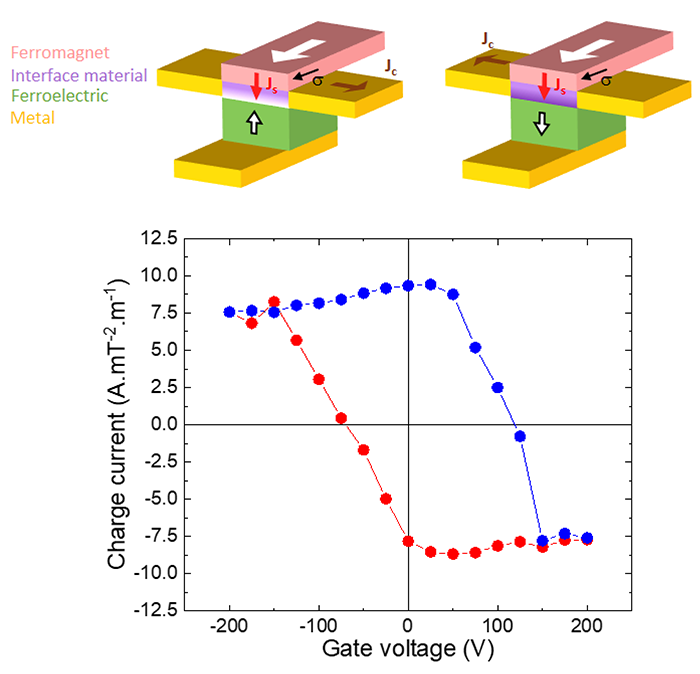
Toward a more energy-efficient spintronics
Electron spin—a fundamentally quantum property—is central to spintronics, a technology that revolutionized data storage,1
and that could play a major role in creating new computer processors. In order to generate and detect spin currents, spintronics traditionally uses ferromagnetic materials whose magnetization switching consume high amounts of energy. In the April 22, 2020 issue of Nature, researchers at the Spintec Laboratory (CNRS/CEA/Université Grenoble Alpes) and the CNRS/Thales Laboratory recently presented an approach that can detect spin information at low power using a non-magnetic system. Their research opens the way towards spintronic devices that operate on ferroelectricity rather than on ferromagnetism, thereby consuming 1,000 times less energy.

- 1Spintronics seeks to create electronics that are based not solely on the charge of the electron, but on that of spin as well. It notably grew out of the research that Albert Fert, winner of the 2007 Nobel Prize for Physics, conducted on “Giant Magnetoresistance”. Spintronics helped increase the storage capacity of hard drives, and more generally found numerous applications in information and communication technologies.
Non-volatile electric control of spin-charge conversion using a SrTiO3 Rashba system. Paul Noël, Felix Trier, Luis M. Vicente Arche, Julien Bréhin, Diogo C. Vaz, Vincent Garcia, Stéphane Fusil, Agnès Barthélémy, Laurent Vila, Manuel Bibes and Jean-Philippe Attané. Nature, 22 April 2020. DOI : 10.1038/s41586-020-2197-9

